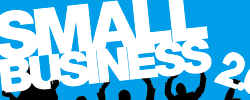
Popular Reading

Budget Account
Many shops, particularly outfitters and drapers, offer a budget facility. This is designed for financing not a single purchase of a high-priced article, but for repeated small purchases. The customer decides how much he can afford to pay the shop as a monthly instalment (a minimum payment is usually set of £2 to £5), and the shop allows him to purchase goods to the value of, say, 24 times the instalment.
This is a useful device from the trader's point of view since it encourages the customer to deal regularly with him; and from the customer's angle it affords the useful facility of 'revolving credit', for he can continue taking fresh credit as he pays off the old - provided only that the outstanding debt may never exceed the stated number of monthly instalments.
Interest is charged monthly on the amount outstanding at the same rate as is charged for extended credit on a charge account, so that the true interest cost is again around 25% to 30% per annum.

Flat Rate And True Rate
Notice particularly that the quoted rate of interest is a flat rate, by which is meant that it is calculated on the original amount borrowed for the whole of the credit period. But since the purchaser is repaying part of his borrowing each month he is in effect paying interest on money he is not borrowing! Indeed, a flat rate over one or two years works out at a true rate of about twice the flat rate. The true annual percentage rate of interest under a credit sale agreement ranged in 2012 from 24% to 27%. Rates vary, of course, from shop to shop.
Hire purchase
Buying on hire purchase... see: Flat Rate And True Rate